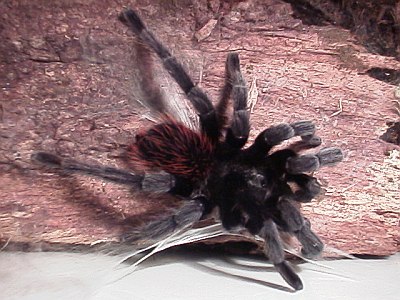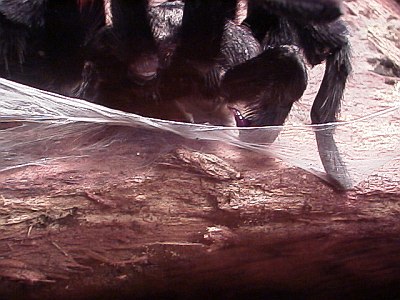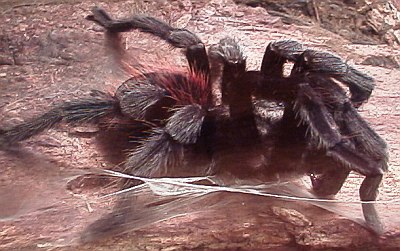

Today I noticed that my tarantula spider, species Brachypelma vagans, was creating a web. At first I thought it was going to make a place to prepare for moulting. But based on replies and careful inspection of how a part of the web was constructed it became clear to me that the spider was a male tarantula creating a sperm web. A few days ago I read "The Proper Technique for Sexing Living Theraphosid Spiders", and hence was aware that male tarantulas have a special set of spinnerets (epiandrous fusillae) on a special area (epigastric furrow) of their "belly" and today I was able to observe those spinnerets in action.

In the close-up picture of the sperm web below, the part that stands out was made with the male spinnerets (epiandrous fusillae). It was very nice to watch the tarantula spider hard at work.

After posting some pictures on the Arachnoboards forum, people explained to me that this was a sperm web, and not an upcoming molt (oops). This makes the spider an adult male. It also means that it has only several months left to live.

I took some more pictures, and after that Esme and I went out to the city. When I returned I took some more pictures, read replies to my post, and did some catching up using Google.

After reading a web page on breeding tarantulas I could identify other parts of the tarantula like the spur (tibial apophysis) on the tibia of the first leg, see center of the image below; the hook under the first knee. Also, through the web you can see the secondary sex organ (embolus) on the palp.

The picture below gives a better view of the embolus (center). It looks like a stinger, but it's not, it's used to transfer the sperm to the female.

